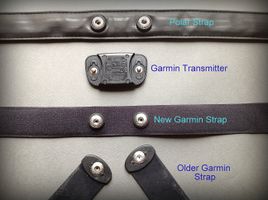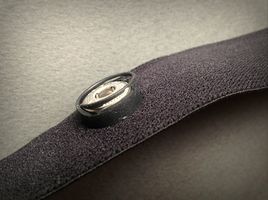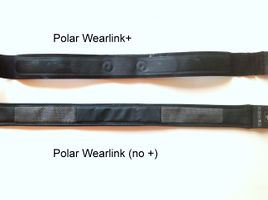Fixing Heart Rate Monitor Problems
The Heart Rate Monitoring of Garmin watches is not as reliable as the Polar systems. The latest soft straps are better than earlier generations, but they can still be problematic. A worthwhile upgrade is to purchase a Polar Wearlink+ Replacement Strap. The Garmin transmitter fits into the clips of the Polar strap, and you get a much better reading. There are two versions of the Polar strap, the Wearlink and the Wearlink+, though the names are not used consistently. The Wearlink is more comfortable and chaffs far less than the Wearlink+. The Wearlink+ is seems to last slightly longer, but I find it cuts into my skin on longer runs. The most obvious difference between the two is that the Wearlink has cloth electrodes that you can dampen and the Wearlink+ has plastic electrodes (you still have to dampen your skin).
- Heart Rate Monitor Straps
Fixing other problems
There are a number of problems you can still get with the Garmin Heart Rate Monitoring
- Make sure you dampen the strap, the electrodes and the contacts between the strap and the transmitter. Just water should work fine, though you can buy electrode gel. The Polar Wearlink strap should not dry out, unlike most others. (You can always apply a little spit to wet it while on the run.)
- Unlike the Polar system, the contacts on the transmitter tend to rust, so it's important to disconnect the transmitter from the strap after each use. You can see a little of the rust in the picture above.
- If you do get rust on the transmitter connecters, then a wire brush can fix the problem. I used these small brushes that worked well for me.
- Over time the Wearlink+ strap can get stiff and cut into your chest. I’ve not found a way of re-softening the strap, so it’s time for a replacement if this happens.
- A low battery can result in bad reception, and the watch does not always report a low battery condition properly.
- The straps can be damaged by washing and require careful hand washing, not machine washing. If you damage a strap, it needs replacement.
- Interference from overhead power lines used to be a problem, but the modern systems have reduced this dramatically.
- All of the soft straps require periodic replacement, so you may need a new one.




